You have already added that item to your appointment.
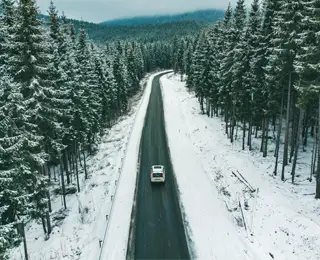
You have already added that item to your appointment.
Winter driving anywhere in the Rockies can be challenging. With high elevations, unpredictable snowfall, ice-covered roads, and the ever-present possibility of an avalanche, it’s important that you have the right winter tires and traction devices, including tire chains and tire socks. We’ve put together some tips for safe winter driving in the Rockies, how to find the right winter tires, and what you should have with you on any cold-weather driving adventure.
The states where the Rocky Mountains dominate the landscape have some diverse winter weather conditions. Those states include Arizona, Colorado, Idaho, Montana, Nevada, New Mexico, Utah, and Wyoming. In some of those states, mountain ranges, elevation, and prevailing winds, play a part in winter storms that can blanket whole regions in hours. Additionally, lake-effect snow can intensify storm systems. But there are also the portions of the Rockies that see much-less snowfall.
In Colorado, for example, areas from Grand Junction to Denver can seem like an insurmountable obstacle — especially when they’re covered in snow and ice. But over on the east side of the state, places like Lamar experience plains-like winters, with milder weather and less snowfall, but plenty of wind and whiteouts.
During winter months, drive with caution wherever you drive in and around the Rockies. Up to a foot of snow can quickly accumulate on mountain passes and city highways.
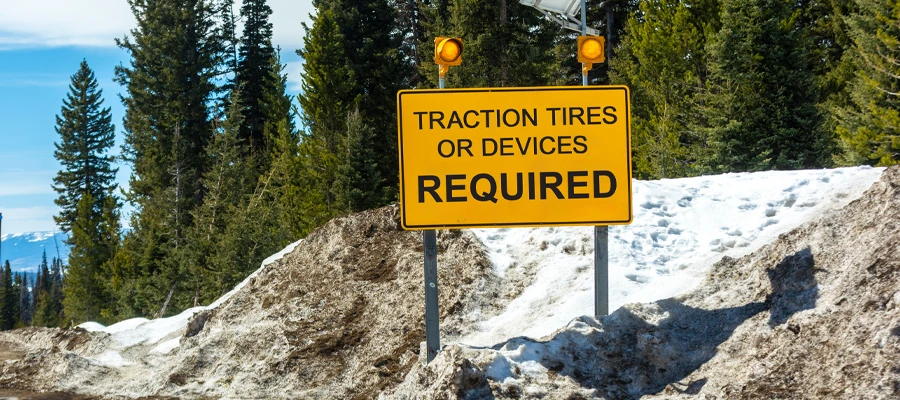
Heavy snowfall, ice, black ice, as well as the possibility of avalanches in some areas can make driving challenging in the winter. Be aware that the following highways can be especially treacherous. Check road conditions in Arizona, Colorado, Idaho, Montana, Nevada, New Mexico, Utah, and Wyoming before your next road trip.
Safe winter driving anywhere among the Rockies starts with the right tires and traction devices. The professionals at Les Schwab can help you choose the best snow tires for your needs. That includes studded and studless winter tires, all-weather tires for milder winter regions, as well as tire chains and tire socks for the deep stuff. Stop by Les Schwab today.
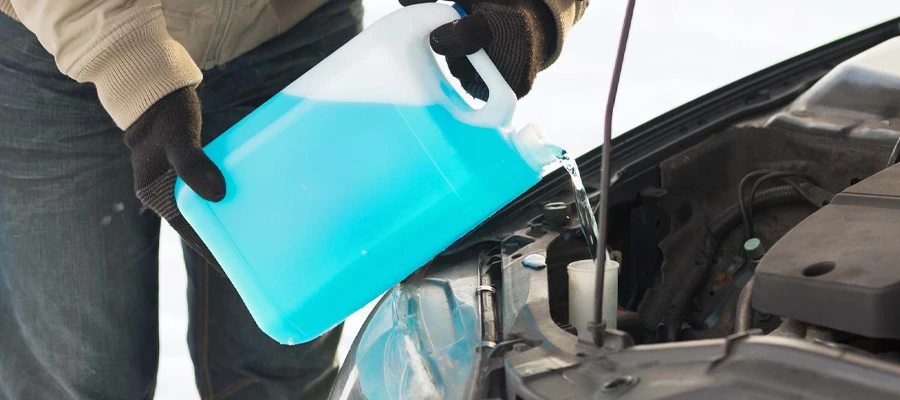
Having the right snow tires for your vehicle is essential. But there are a handful of other items to check, and winterization tips to complete, before you head out on snow-covered interstates.
When driving on snow and ice anywhere in and around the Rockies, follow these driving tips.
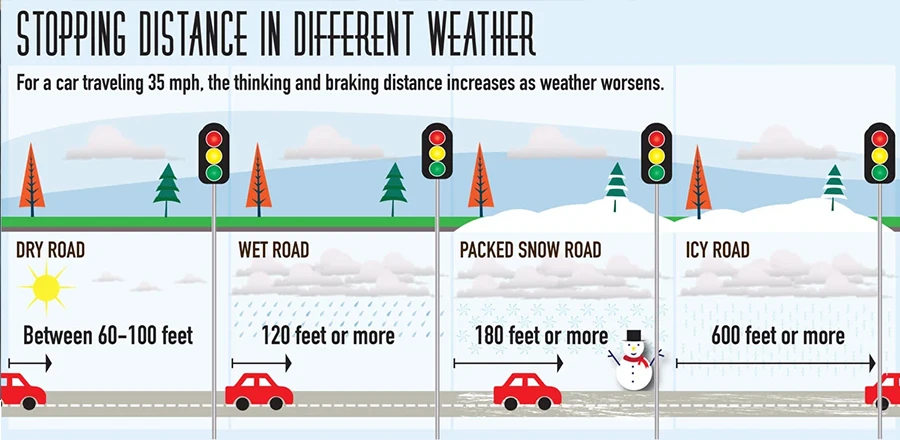

Tire chain laws, as well as studded tire restrictions, vary by state and region. Here’s when it’s legal to use chains and studded tires in Arizona, Colorado, Idaho, Montana, New Mexico, Utah, and Wyoming.
Get your next set of tire chains and tire socks at Les Schwab. They can be smart and often legally required items to have with you anywhere you go in and around the Rockies. Best of all, if you don’t use them this winter, you can return them in the spring for a full refund. Need help putting them on? Check out these tips, including our how-to video.
Arizona allows studded tires on highways that experience winter conditions from October 1 to May 1. Tire chains are allowed as needed or when required. Please note: studded tire dates may be extended due to weather conditions. Find more information here.
The Colorado Department of Transportation has some specific laws and requirements for the use of tire chains, traction devices, and studded tires. Failure to follow the overall guidelines can result in heavy fines. The fine can be especially high if you end up blocking the roadway due to inadequate equipment. Simply put, carry a set of chains or tire socks for two or more of your tires from September 1 to May 31. It is legal to drive on studded tires from October 1 to April 30. Please note: studded tire dates may be extended due to weather conditions. Find more information here.
Drivers are allowed to use studded tires from October 1 to April 30, but the Idaho Department of Transportation urges drivers to use them only when needed. Tire chains are allowed when necessary. Please note: studded tire dates may be extended due to weather conditions. Find more information here.
Studded tires are allowed on Montana highways and roads from October 1 to May 31 of each year. Snow chains are allowed as needed or when required. Please note: studded tire dates may be extended due to weather conditions. Find more information here.
The New Mexico Department of Transportation does not have any set dates for the use of studded tires. Officials urge drivers to use snow tires, including studded tires and chains, when needed for safety on winter roads. Please note: studded tire dates may be extended due to weather conditions. Find more information here.
Depending on where you live or where you’re driving, Utah allows studded tires from November 1 to March 31. Additionally, snow tires and tire chains are recommended anywhere that sees significant snowfall. Please note: studded tire dates may be extended due to weather conditions. Find more information here.
There are no date restrictions on when drivers can use studded tires or chains in Wyoming. However, failure to have snow tires or tire chains can result in heavy fines. Please note: studded tire dates may be extended due to weather conditions. Find more information here.
The Rockies can be unforgiving in the colder months. Be sure you have the basic essentials you need when driving in the winter. To help you get safely to where you’re going, our professionals have advice on how to drive in the snow and how to drive on the ice.
Every long-distance winter adventure should start with a quick check of weather and road conditions. You can find that information and more for Arizona, Colorado, Idaho, Montana, Nevada, New Mexico, Utah, and Wyoming. Some basic winter road trip tips include:
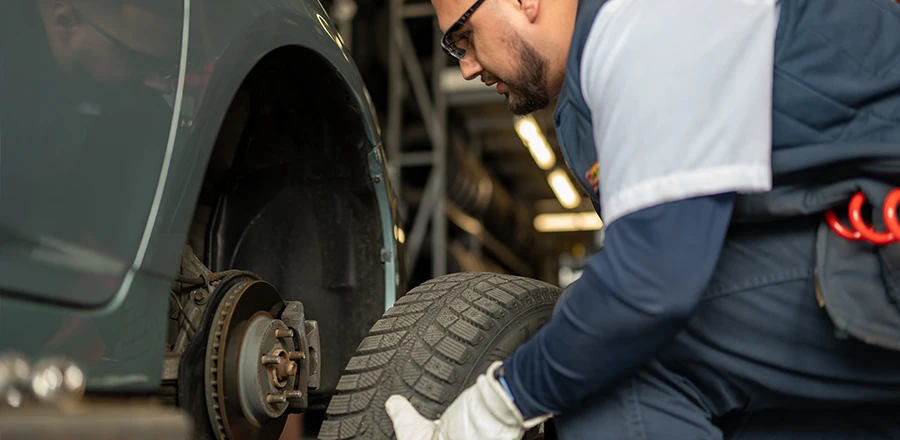
Winters among Rocky Mountain states can be challenging when navigating snow- and ice-covered roads. Les Schwab is here to help. The professionals at your local store are happy to offer free pre-trip safety checks, local winter driving tips, and help you choose the right snow tires and tire chains to meet legal requirements and face nearby winter roads with confidence.